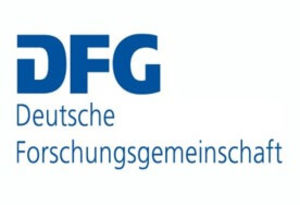- Institut
-
Herz- und Kreislaufphysiologie
- Markus Hecker
- Thomas Korff
-
Hugo H. Marti
-
Forschung
- Zelluläre und molekulare Mechanismen der postnatalen Entwicklung des zerebralen Gefäßsystems
- Die Bedeutung der molekularen PHD-HIF Achse für den akuten Schutz und die langfristige Regeneration nach einem ischämischen Schlaganfall
- Charakterisierung und gezielte Aktivierung von NRF2-abhängigen antioxidativen Mechanismen beim akuten Schlaganfall
- Extrazelluläre Nukleinsäuren als Trigger neuroinflammatorischer Prozesse in akuten und chronisch degenerativen Erkrankungen des Zentralnervensystems
- Neuroprotektion und Neurogenese
- Blut-Hirn-Schranke
- Publikationen
- Personal
-
Forschung
- Andreas H. Wagner
- Neuro- und Sinnesphysiologie
- Lehre
- Zentrale Einrichtungen
- Bernard Katz Lecture
- Stellenangebote
- Aktuelles
Corticothalamic pathways in pain (Rebecca Mease & Alexander Groh)
As part of the DFG-funded CRC 1158 (https://www.sfb1158.de/), we investigate the role of corticothalamic signalling in pain. A central question concerns the causality between cortical output activity and nociception. Cortical output pathways are broadly classified into two signalling streams: one originates in cortical layer 5, which targets the thalamus and other subcortical circuits. The other originates in cortical layer 6 and exclusively targets thalamic structures and in fact is the major input to some thalamic areas in terms of synapse numbers. The two cortical output streams have a number of anatomical and functional differences, and we assess if layer 5 and 6 output pathways are differentially involved in nocifensive behaviour and nociceptive processing in the lateral thalamocortical system. Our aims are twofold: testing targeted interventions of cortical output pathways to modulate and relive pain and secondly, understanding neuronal mechanisms that lead to abnormal cortical output activity that leads to pain.
Researchers
Katharina Ziegler
Ross Folkard
Antonio Gonzalez
Jan Burghardt
Cooperation partners
Amit Agarwal (Institute of Anatomy and Cell Biology, Medical Faculty Heidelberg)
Rohini Kuner (Institute of Pharmacology, Heidelberg)



Cortical output pathways originate in cortical layers 5 and 6 and may be differentially involved in nociceptive processing. We are testing targeted interventions of cortical output pathways to modulate and relive pain and work towards a better understanding of the neuronal mechanisms that lead to abnormal cortical output activity underlying pathological pain.
- Institut
-
Herz- und Kreislaufphysiologie
- Markus Hecker
- Thomas Korff
-
Hugo H. Marti
-
Forschung
- Zelluläre und molekulare Mechanismen der postnatalen Entwicklung des zerebralen Gefäßsystems
- Die Bedeutung der molekularen PHD-HIF Achse für den akuten Schutz und die langfristige Regeneration nach einem ischämischen Schlaganfall
- Charakterisierung und gezielte Aktivierung von NRF2-abhängigen antioxidativen Mechanismen beim akuten Schlaganfall
- Extrazelluläre Nukleinsäuren als Trigger neuroinflammatorischer Prozesse in akuten und chronisch degenerativen Erkrankungen des Zentralnervensystems
- Neuroprotektion und Neurogenese
- Blut-Hirn-Schranke
- Publikationen
- Personal
-
Forschung
- Andreas H. Wagner
- Neuro- und Sinnesphysiologie
- Lehre
- Zentrale Einrichtungen
- Bernard Katz Lecture
- Stellenangebote
- Aktuelles




